 |
||
|
||
| ||
More and more video cards based on the GPU NVIDIA GeForce2 MX are appearing on the market. Today we will consider two video cards from a well known manufacturer Chaintech Computer. But first I want to explain why the boards have different brands and names. A taiwanese company called VideoExcel specialized in production of cheap video cards for the most unpretentious systems. For example, up to this time they manufactured boards on the S3 Trio3D. Not so long ago the company was bought and then they entered Chaintech Computer. The latter received both buildups of VideoExcel's engineers and some production facilities. The leaders of Chaintech Computer made a decision to divide Chaintech Desperado and VideoExcel brands among price and consumer market niches. The Desperado brand will serve for more expensive video cards up to High-End class, and the VideoExcel will be intended for tight-budget computer systems. In this case the both video cards belong to one manufacturer Chaintech Computer, but are divided according to costs and brands. Let's at last turn to consideration of their possibilities. As to the GPU NVIDIA GeForce2 MX, there were a lot of reviews on it, that's way I won't repeat it once again. Board: Chaintech Desperado AGP-RIA2 TurboThe video card has the AGP 2x/4x interface, 32 MBytes SDR SDRAM located in 4 chips on the right side of the PCB. 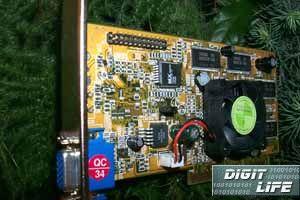 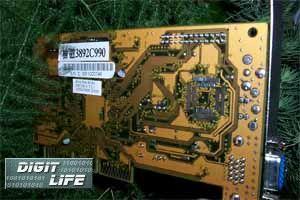 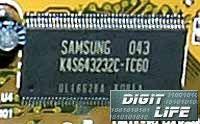 The modules are produced by Samsung and intended for 166 MHz memory working frequency: 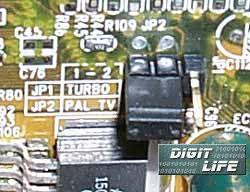 Now come the distinguishing features. The suffix Turbo in the name is not just for nothing. Let's recall a video card Gigabyte GA-660+ (NVIDIA Riva TNT2 Pro based), which has a jumper for switching Turbo mode, i.e. increased frequencies. The Chaintech Desperado AGP-RIA2 Turbo has a similar switch which makes possible to set 185/175 MHz (against the default 175/166 MHz). The chipset is equipped with a usual active cooler. As usual, the PCB is yellow. The design of the card differs from the NVIDIA reference one considerably that's why we will pay special attention to the graphics. The video card has neither TV-out nor a connector for digital monitors (DVI). The card is shipping in a box of the legacy bright design: 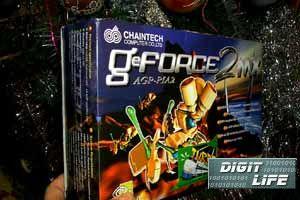 What's inside the board (apart from the board):
OverclockingUnfortunately, the Turbo rank allowed only regular overclocking. Above, we managed to reach stable work of the GPU only at 195 MHz, and the memory operated at 180 MHz. It's nearly the lowest overclocking we reached with the tested video cards of this class. While overclocking we used an additional fan installed in the case of the test machine. Board: VideoExcel AG-RIA2The video card has the AGP 2x/4x interface, 32 MBytes SDR SDRAM located in 4 chips on the right side of the PCB. 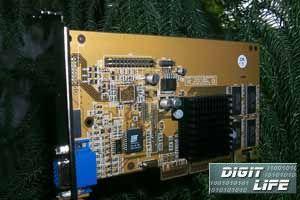 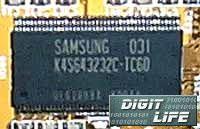 The modules are produced by Samsung and intended for 166 MHz memory working frequency. Now come peculiar features of the board. The video card works at ordinary frequencies 175/166 MHz. The chipset is equipped with a fin heatsink without a fan. The PCB is rich yellow. In general, the board completely follows the NVIDIA reference design. The video card has neither TV-out nor a connector for digital monitors (DVI). The card is shipping in a box of the legacy bright design: 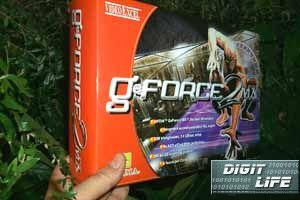 What's inside the board (apart from the board):
OverclockingWith this card we managed to reach overclocked operating, usual for many GeForce2 MX-based card: the GPU work stable at 220 MHz, and memory ran at 210 MHz. It surprised me a lot since the memory chips on the both cards are the same but overclocking possibilities differ much. It might be caused for example by influence of the reference design. Installation and driversFirst up the test system:
Together with the card the supply the reference drivers from NVIDIA of 6.18 version. For testing I used 6.47 beta drivers from NVIDIA. The tests were carried out with Vsync disabled. For comparison we used results of the following video cards: reference card NVIDIA GeForce2 MX, Leadtek WinFast GeForce2 MX DVI. We read measurements from the Chaintech Desperado AGP-RIA2 Turbo while in Turbo mode, since I doubt whether anybody would run this card at lower frequencies (185/175 MHz are in fact regular frequencies for this card). Test resultsLet's start with 2D-graphics. In the first review on the ASUS AGP-V7100 I estimated speed parameters. All cards based on the GeForce2 MX have not any considerable differences here. As far as 2D-quality is concerned I should notice that the Chaintech Desperado AGP-RIA2 Turbo has nearly nothing in the image quality to complain about, despite the non-reference design; the VideoExcel AG-RIA2 showed nothing good. The image at higher than 1024X768 was awful. I don't know who is to blame, since there is the reference design used. It might be just a defective sample. With the following 2 games we will consider speed level in 3D-graphics:
Quake3 ArenaThe test on the standard demo002 was carried out in two modes: Fast (shows card's work in 16-bit color) and High Quality (shows card's work in 32-bit color). 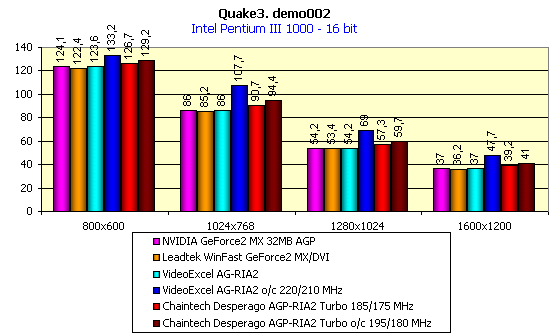 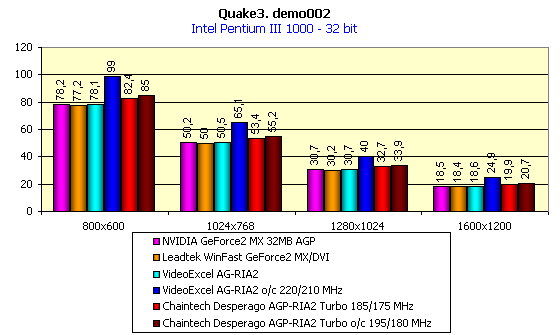 The results are expectable, the Chaintech Desperado AGP-RIA2 Turbo at higher frequencies performs much better as compared with the competitors, but overclocking yields nearly nothing. And increase of frequencies of the VideoExcel AG-RIA2 brought in a considerable speed growth. ExpendableWe will use this game to show the card's speed in Direct3D. 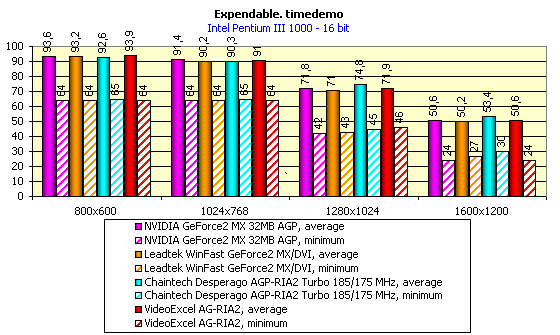 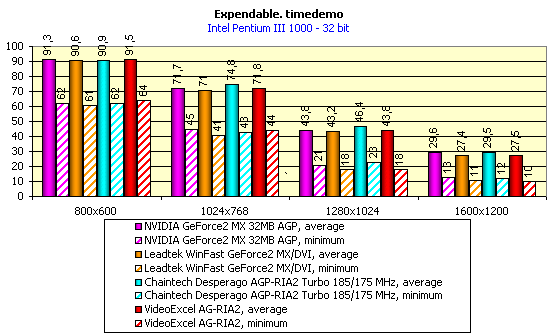 The results are identical. Let's sum up the performance scores of the considered boards from Chaintech:
Additional functionsUndoubtedly, many of you are interested in the work of new cards in terms of DVD-video support. I have mentioned that the NVIDIA GeForce256/GeForce2 chips actively participate in MPEG2-stream decoding. All modern soft DVD players support these processors that's why you can get decent movie playback together with low CPU utilization with ease. Currently considered cards differ in nothing from others. ConclusionChaintech supplied two video cards differing both in possibilities and in price. The cheaper VideoExcel AG-RIA2 is based on the reference design and serves as a common video card powered by the NVIDIA GeForce2 MX. Unfortunately, bad quality in 2D worsened impression gained from this card (note that it might be just a defective sample). The second board Chaintech Desperado AGP-RIA2 Turbo costs more but shows better performance at regular frequencies in turbo mode. It is based on the proprietary design and shows good results not only in 3D but also in 2D. Highs:
Lows:
Write a comment below. No registration needed!
|
Platform · Video · Multimedia · Mobile · Other || About us & Privacy policy · Twitter · Facebook Copyright © Byrds Research & Publishing, Ltd., 1997–2011. All rights reserved. |